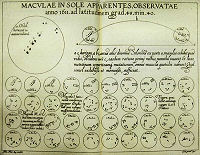Light Speed Facts
Telescope | Light Year | History Read
THE AGE OF THE LIGHT WE SEE
Galileo's telescope
Did you know that in the early 17th century, craftsmen and scientists introduced a new tool for studying the heavens. The telescope, one of the central instruments of the Scientific Revolution, soon became the astronomer's most essential tool. Now the astronomer could see countless stars and other faint objects never before visible. Suddenly the universe was no longer limited to what the naked eye could see. As telescopes improved, astronomers continued to push back the boundaries of the known universe, peering ever deeper into the surrounding sea of stars known as the Milky Way.
Astronomers can measure the distances to the stars from their apparent size or brightness, and in many other ways. These distances are so great that billions of years are required for their light to reach us. Thus we are actually seeing these stars not as they are today, but as they were billions of years ago
"I demonstrate by means of philosophy that the earth is round, and is inhabited on all sides; that it is insignificantly small, and is borne through the stars." Johannes Kepler 1571-1630
Light Takes
186,000 Miles Per Second
SPEED AT WHICH LIGHT TRAVELS
5,869,713,600,000 Miles
DISTANCE LIGHT TRAVELS IN 1 YEAR
Answers to Below Appear at Right-Side in Box
-
Time for sunlight to reach:
- Saturn
- Earth
- Andromeda Galaxy
- Nearest Star Proxima Centauri
- The Edge of our Universe
- Other Pages
Time for light to reach us from:
Where are the links to the:
History Project this Month
Find and Read Aboutthe Sunspot plate from Christoph Scheiner's Tres Epistolae See Biblioteca Digitale Where you'll find a copy of the original text - in latin.
